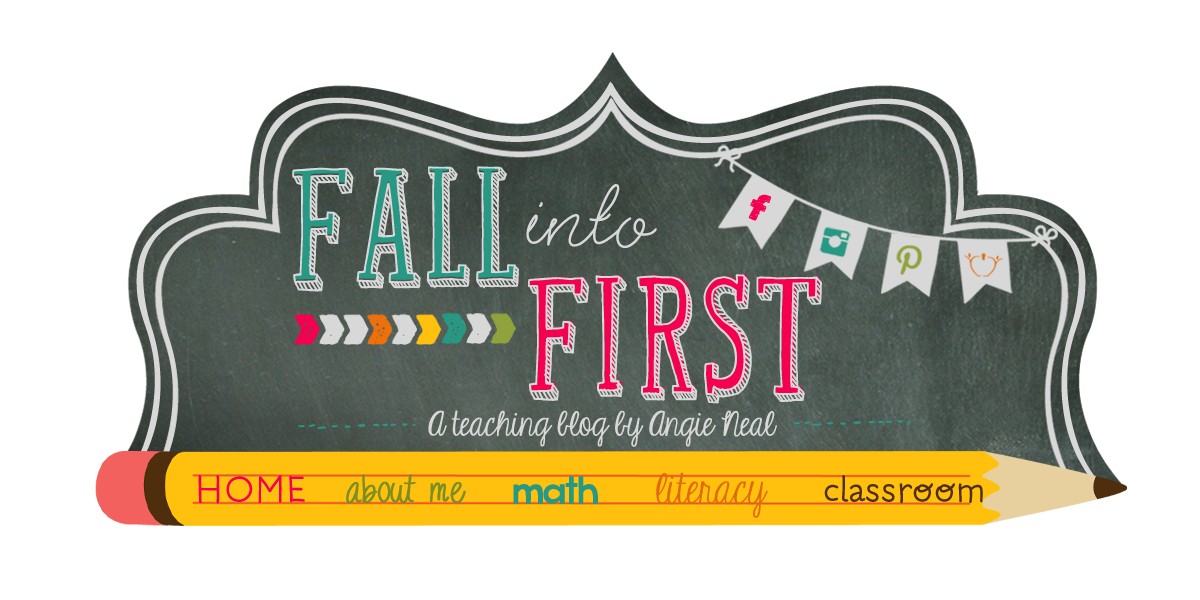Click here to view my Unit 5 Math program. This unit includes everything you will need for 10 days of math instruction. I began developing these units out of frustration with not having consistent materials to teach the new math core standards. I believe consistency is the key to student achievement so I try to keep my math time very structured. Below I have described what my hour math block looks like.
Daily Math Schedule:
1. Problem of the Day. Each student has a spiral “Math Journal”. They are given a “Problem of the Day” to glue onto their page. We read the problem together then they are given a few minutes to work the problem out independently. I encourage them to then share their thinking with their table partner then students can volunteer to share their thinking with the class. My "Problem of the Day" Packet is available for purchase at TPT.
2. Calendar time. Our calendar helper helps lead us through our daily calendar routine. I believe so many important skills can be taught during this time. I like to have a outline to follow (I have included this in the teacher pages) but often times I review/discuss many other concepts.
3. Mini-Lesson. Each day we have a math mini-lesson. This can take anywhere from 15 -30 minutes. (Each mini-lesson is included in the teacher pages.) Try not to skip a mini-lesson because these skills come into the worksheets.
4. Guided practice. Students are given a worksheet with a guided practice side and an independent practice side. We do the guided practice side together.
5. Independent Practice. Students complete the reverse side independently. The independent practice pages were designed to be spiral; students are constantly being challenged to review previous concepts. When they are finished I check their work and dismiss them to their math tub.
6. Math tubs - Usually run between 15 - 25 minutes (time depends on how long the mini-lesson of the day was). Two to three students go to each math station. Stations contain games and activities that were played during prior units.
After attending a Math Core Standards training, I found that the CORE standards are much more vague and open-ended than what I am used to. Please keep in mind that this is my interpretation of the standards and I believe that what I create closely aligns with the Core Standards but, you know your students better than anyone and materials may need to be adjusted to fit their needs. I hope this unit is something you find useful in your class. I would appreciate any questions and feedback that you have. I will be posting unit 6 soon!
Daily Math Schedule:
1. Problem of the Day. Each student has a spiral “Math Journal”. They are given a “Problem of the Day” to glue onto their page. We read the problem together then they are given a few minutes to work the problem out independently. I encourage them to then share their thinking with their table partner then students can volunteer to share their thinking with the class. My "Problem of the Day" Packet is available for purchase at TPT.
2. Calendar time. Our calendar helper helps lead us through our daily calendar routine. I believe so many important skills can be taught during this time. I like to have a outline to follow (I have included this in the teacher pages) but often times I review/discuss many other concepts.
3. Mini-Lesson. Each day we have a math mini-lesson. This can take anywhere from 15 -30 minutes. (Each mini-lesson is included in the teacher pages.) Try not to skip a mini-lesson because these skills come into the worksheets.
4. Guided practice. Students are given a worksheet with a guided practice side and an independent practice side. We do the guided practice side together.
5. Independent Practice. Students complete the reverse side independently. The independent practice pages were designed to be spiral; students are constantly being challenged to review previous concepts. When they are finished I check their work and dismiss them to their math tub.
6. Math tubs - Usually run between 15 - 25 minutes (time depends on how long the mini-lesson of the day was). Two to three students go to each math station. Stations contain games and activities that were played during prior units.
After attending a Math Core Standards training, I found that the CORE standards are much more vague and open-ended than what I am used to. Please keep in mind that this is my interpretation of the standards and I believe that what I create closely aligns with the Core Standards but, you know your students better than anyone and materials may need to be adjusted to fit their needs. I hope this unit is something you find useful in your class. I would appreciate any questions and feedback that you have. I will be posting unit 6 soon!


1 comment:
The house or place that will be sprayed with pesticides will be evacuated from the people and the food will be full.
A cheap Riyadh spray agent works by wearing protective clothing for pesticide spraying such as aphrodisiacs, gums, rubber boots and handcuffs.افضل شركة نقل اثاث
Post a Comment